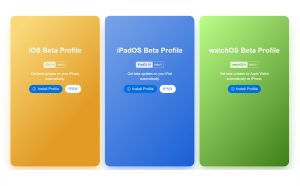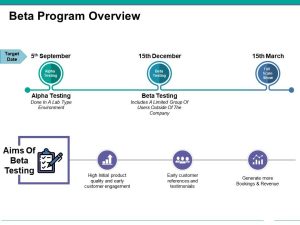Introduction: Apple fanatics impatiently await the launch of fresh software and capabilities, while software creators and examiners contribute decisively to the ultimate output. These pre-launch stages play a crucial role in application creation., Discerning the variances between alpha and beta software can be complex. We aim to clarify the meanings of alpha and beta builds
Introduction:
Apple fanatics impatiently await the launch of fresh software and capabilities, while software creators and examiners contribute decisively to the ultimate output. These pre-launch stages play a crucial role in application creation., Discerning the variances between alpha and beta software can be complex. We aim to clarify the meanings of alpha and beta builds in Apple software development.
Alpha and Beta Builds: Understanding the Differences
Before delving into the specifics, let’s define alpha and beta builds:
Alpha Builds:
A partially developed software, termed an alpha build, is currently undergoing refinement. In the subsequent phase, developers concentrate on incorporating primary capabilities. A plurality of these constructs frequently exhibit a copiousness of bugs, usability issues, and performance hiccups. Alpha testing’s central aim is to identify major faults and determine absent capabilities. Traditional methodology has involved conducting alpha tests internally among development staff to resolve crucial problems prior to advancing to the next stage.

Image by: www.instabug.com
Beta Builds:
Unlike alpha builds, beta versions are more polished and refined software iterations. The software has reached its current milestone by incorporating all features. A small pool of external testers and even end-users receive access to the app through beta testing. Gathering insights from actual usage allows developers to identify and resolve a more comprehensive range of problems. There may still be some technical issues with beta versions, despite their generally improved stability compared to alpha builds.

Image by: https://tinhte.vn/
Key Differences between Alpha and Beta Software:
Development Progress: Alpha versions prioritize the establishment of basic features and defect correction. Although betas represent an elevated stage, they demonstrate the software at full functionality with all designated capabilities intact.
Testing Scope:
Restricted to internal testers, alpha testing allows developers to tightly manage the testing process. Unlike alpha testing, beta testing entails external testers and a broader user base, thus offering more varied testing situations.
Bugs and Stability:
The volatile nature of alpha builds hinders their reliability for everyday tasks. Beta releases often demonstrate reduced incidences of critical problems and increased stability.
Feedback Collection:
Alpha testing primarily targets verifying key features and identifying important flaws. Broadcasting testing and promoting openness facilitates user input on various factors, including minor software flaws and interface usability from a larger pool of users.
Apple’s Approach to Pre-release Builds:
Apple follows a structured approach to its pre-release software:

Image by: https://www.slideteam.net/
Internal Testing (Alpha):
Internal Apple teams cooperate closely to evaluate the functionality of core features and resolve primary challenges during the alpha phase.
Developer Beta (Beta 1):
Public beta for developers marks the initial stage, open to approved devs. They can examine their apps’ performance on the latest iOS and report any compatibility issues.

Image by: https://helpx.adobe.com/
Public Beta (Beta 2):
The public beta was made available after addressing concerns with the developer version.
Release Candidate (RC):
The RC represents the most polished beta iteration, set for release unless problems arise.
General Availability (GA):
GA signifies the reliable release distributed to users.
Conclusion:
Both alpha and beta builds hold significant importance in Apple’s development procedure. Alpha versions concentrate on fundamental functionality and primary bug fixes, whereas beta builds exhibit higher refinement and an expanded scope of capabilities. Wider testing groups offer useful insights for devs before official launch. Enhanced software at Apple results in increased emphasis on alpha and beta trials for optimal user satisfaction.

















Leave a Comment
Your email address will not be published. Required fields are marked with *